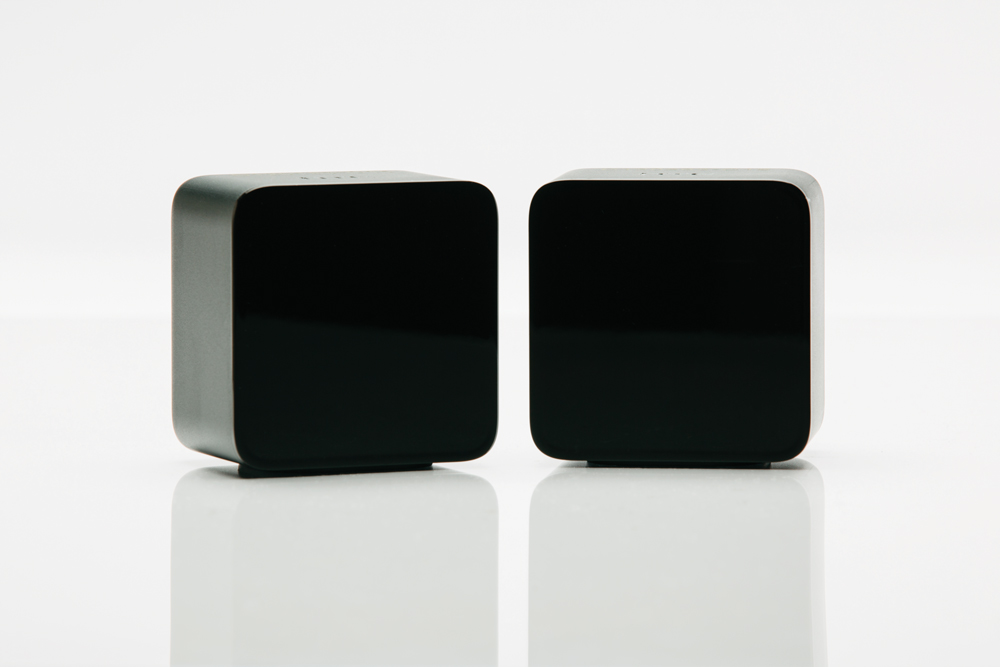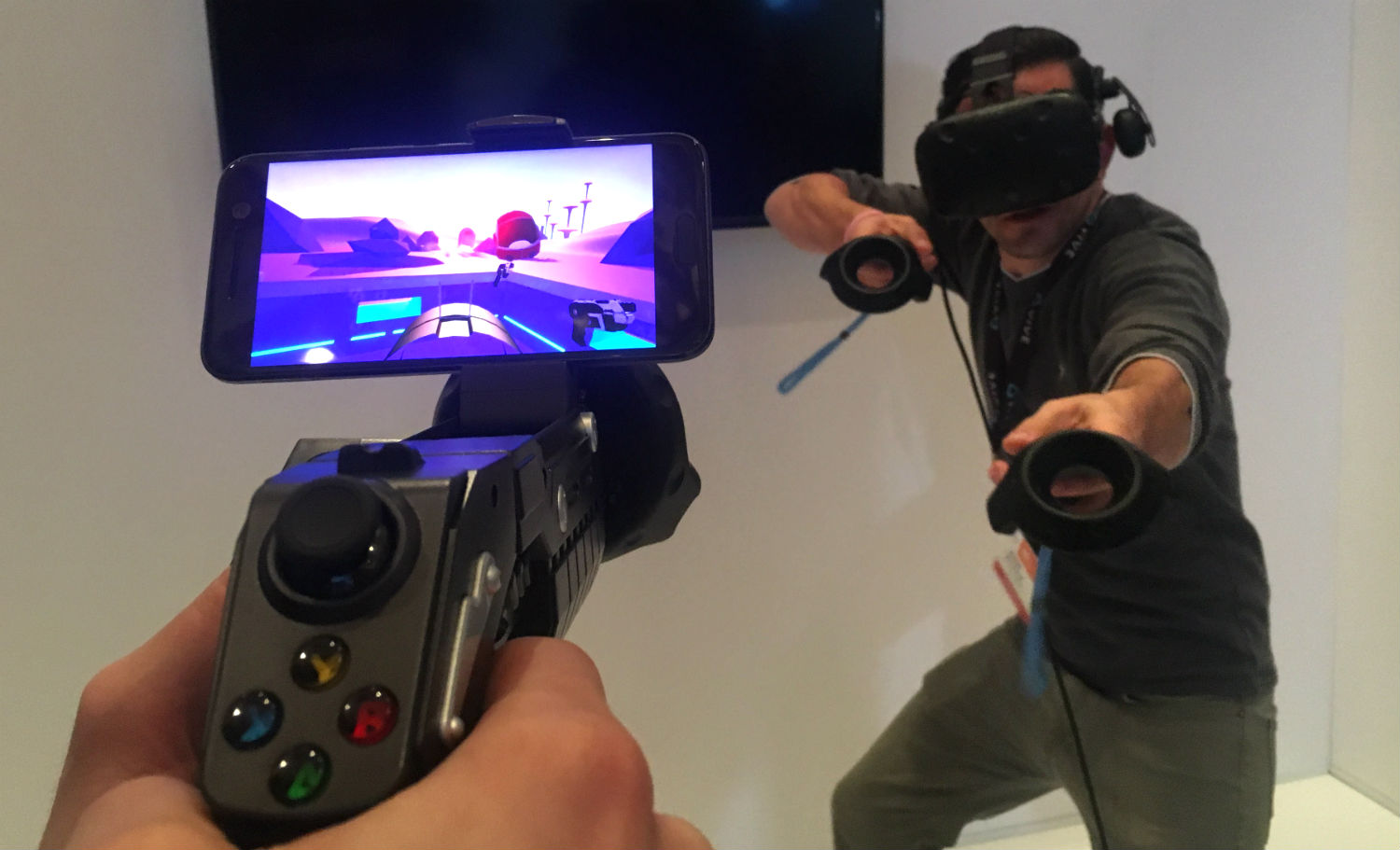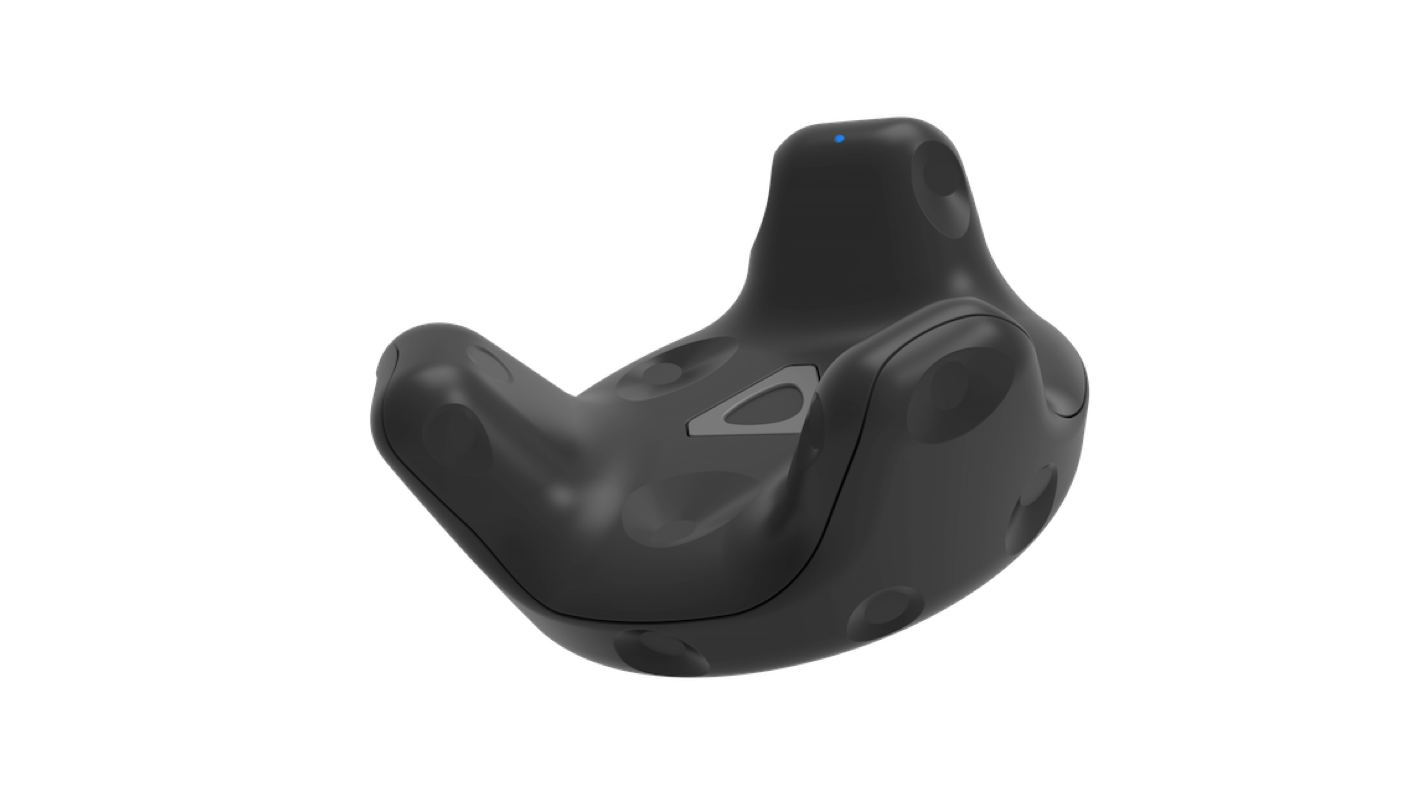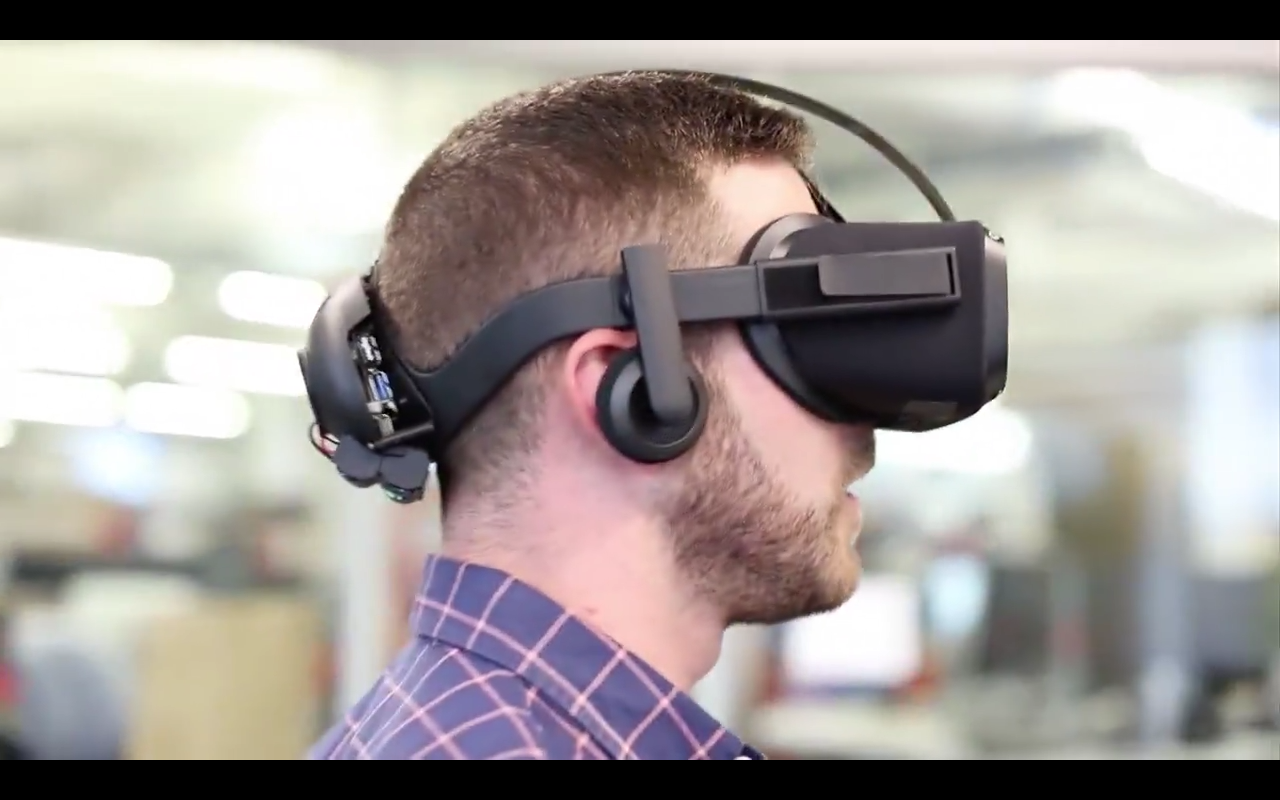Valve’s SteamVR Tracking could have a huge impact on the mixed reality industry this year and next.
5 million Gear VRs sold is a major milestone for Facebook and Samsung, as is $3 million in sales for Job Simulator, a best-selling room-scale game. Sony is going to try to put PS VR’s in 53 million homes this year too and the price of PCs capable of running nausea-free room-scale VR will undoubtedly continue to drop. Not many realize, however, just how dramatically Valve’s SteamVR Tracking technology could impact the industry over the next few months.
Royalty Free Tracking
SteamVR Tracking lighthouses bathe a room with lasers you can’t see with the naked eye. These lasers spin, scanning the room in a timely pattern. Sensors on the headset record when these lasers arrive, allowing the system to pinpoint the headset’s precise location.
Even the Oculus Rift’s largest “experimental” room-scale setup is smaller than what’s possible with the HTC Vive, which uses Valve’s tracking system. So with the $800 purchase of a Vive you get much more reliable freedom to move around a virtual room than even $880 spent for a smaller three camera experimental Rift setup.
The genius of SteamVR Tracking is the lighthouse positional beacons you place around the room don’t need to be hooked up to the PC. Just plug them into a power outlet and you’re good to go. Though you might have to mount base stations to your walls like speakers for optimal coverage, lighthouse beacons make a lot more sense for the most immersive experiences in the largest settings. Backpack PCs, for example, are one avenue to completely wireless VR that’s doable with the Vive but not the Rift because the PC doesn’t physically connect to the tracking system.![]()
At a ‘vSports’ event hosted by VirZoom at CES 2017, the startup placed two lighthouses on either side of eight exercise bikes set up side by side. Eight Vive headsets waited hanging from the handles, hooked up to PCs. Eight players competed in a multiplayer race together, each wearing a headset and pedaling to outpace their opponents. Our writer didn’t pace himself and was disappointed the game didn’t show other players, until he looked behind and saw them gaining fast.
Each PC-headset-bike system communicated independently with the pair of lighthouse base stations, which act as a kind of positional beacon for the eight individual systems. The same event equipped with Oculus Rifts would’ve required a minimum of eight sensors wired to each of the PCs. Anyone thinking about setting up a VR arcade has to consider the complexity of wires, and Vive could have fewer of them. For example, you could easily halve a 4 meter x 4 meter room split into a pair of 2 meter x 2 meter spaces without moving the lighthouses.
Vive Tracker Is Just The Beginning
Imagine batting cages covered by SteamVR Tracking beacons. Instead of a large mechanical arm throwing the ball, a batter wearing a headset swings a bat with a small oddly-shaped puck attached to it. This Vive Tracker sends its location information over wireless to the headset. Bottom line: You see a baseball bat in VR. Could a baseball player having trouble hitting a curve figure it out with hours spent in a VR training simulation that looks, sounds, and feels almost exactly like the real thing?
Demos shown by HTC at CES include tracking a wrist and glove combo for hand tracking, as well as a fire hose and gun.
Attach it to a camera for six hours of mixed reality footage. Attach it to a phone to make your single player VR game a two player game with the second player looking into the virtual world through their phone.
These apps really are just the beginning. An ecosystem of Vive-compatible accessories fits nicely with HTC’s aim of equipping thousands of VR arcades this year, and you could offer an incredible variety of highly immersive experiences in an arcade with realistic props. The Vive Tracker is just one accessory from one Valve partner. What’s coming could be so much more important.
“You’re going to have some peripheral partners that want to have a tracked object in their VR space, just like a headset or just like a controller and embed all the SteamVR Tracking into it, but you’re going to have some that don’t have the engineering capabilities, they don’t have the ability to go do that, or the time,” said Dan O’Brien, HTC Vive general manager. “What we’re creating now with the [Vive Tracker] is creating this universal tracker.”
SteamVR Accessories
Late last year classes were held to teach licensees how to use SteamVR tracking technology. We haven’t really seen the full fruits of those classes yet, except for one video posted last week during CES by Contact Control Interfaces, a startup working on controllers that can simulate touch.
The video shows the Vive Tracker attached to an accessory on the left arm and, on the right, a prototype accessory they built using the development kit from that class. Instead of the oddly-shaped puck attached to do tracking, they placed the sensors at the optimal spots so the object itself can be tracked by the lighthouse base stations.
So there are two avenues for creators to develop tracked objects and accessories it seems — slap a Vive Tracker onto it from HTC or attend a SteamVR Tracking class and figure out how to build your own accessory.
The Missing Pieces
Are additional headsets going to release that are compatible with SteamVR Tracking? If (or when) this happens, it will become clearer that Valve is enabling an ecosystem of objects and accessories all of which can be tracked by the same royalty-free technology. The only real requirement seems to be compatibility with SteamVR.
This means there may be some choices available to enthusiastic buyers looking to upgrade their room-scale Vive system this year. You could theoretically buy a headset from one company but new controllers from someone else. HTC isn’t talking new controllers yet, but according to O’Brien they’ve had access to the prototypes created by Valve.
“You have to think about holding HTC and Valve true to their promise that they won’t fragment developers, how are they not going to do that,” O’Brien told UploadVR.
More ergonomic grip buttons would be top on the list of requests for people owning the current HTC Vive, but more importantly you won’t need to install new tracking hardware to bring new VR items into your home or arcade. Whether it be a new headset, controller or specific tracked object built for specific interests or apps — the same lighthouses could track any of it.
“Lighthouse tracking enables things like the Vive tracker to just work. Accessory developers don’t have to integrate the tech directly into their hardware yet and can allow for a faster time to market until they get lighthouse tracking built-in,” said Anshel Sag, an analyst with Moor Insights & Strategy. “Having the ability to support tracked items and accessories in game on the Vive will prove to be a major differentiator and advantage for Vive over Rift.”
What about inside-out tracking?
Now several major tech companies (such as Facebook and Intel) are racing to solve inside out position tracking, which would allow a headset to pinpoint its location without the need for any external hardware. Microsoft, for example, is sharing its HoloLens tracking technology with partners, which could translate to an even cheaper and easier solution for buyers.
Yet, we’ve not seen that solution in action yet on a VR headset. Plus, it is not clear whether inside-out solutions will be able to match the accuracy and coverage of SteamVR Tracking for hand or controller movements. Solutions like Intel’s that we tried at CES hadn’t seemed to perfect headset tracking yet, let alone the complicated task of tracking fast hand movements or accessories.
For this reason SteamVR Tracking headsets and accessories are poised to become a dominant technology this year for specific VR use cases, like training that requires realistic props and arcades featuring large spaces with a range of experiences.
Might this hardware ecosystem help SteamVR Tracking to become dominant in the home too? We’ll have to wait and see.































